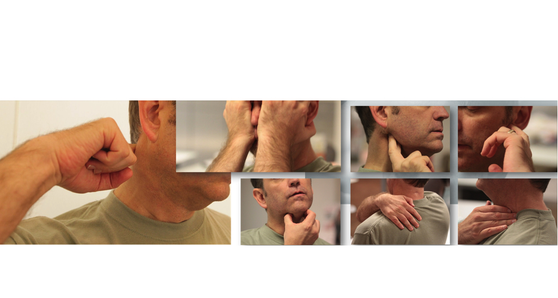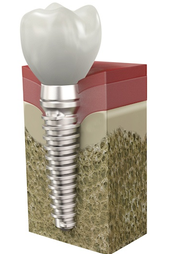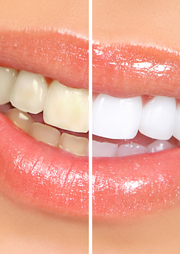Temporomandibular disorders (TMDs) is an umbrella term referring to musculoskeletal disorders belonging to the wider group of Orofacial Pain.
Orofacial Pain refers to a set of pains in the face, neck, and head which affect a large number of patients.
The cause of orofacial pain can often be found in bruxism, snoring, and sleep apnea.
Although in many parts of the world these conditions are still treated by dentists, recent evidence has shown that experts specialising in this field can provide much better diagnosis and treatment.
Indeed, dental treatment is in most cases ineffective or simply unnecessary.
Conservative therapy which does not involve the teeth often proves to be the best solution.
The approach adopted in the most advanced centres for the treatment of these disorders, i.e. the Orofacial Pain Centers of the most prestigious American universities, involves the collaboration of various practitioners: dental experts specialising in orofacial pain, psychologists, physiotherapists, and maxillofacial surgeons.
Doctor Castroflorio is a member of the American Academy of Orofacial Pain. As a result of the training received during a post-graduate course in orofacial Pain at the Dental School of the University of New Jersey (USA), he has devised an approach to these problems relying on collaboration among various specialists, as commonly seen in the most technologically advanced US centres. At our practices of Turin and Neive, you will meet the following experts:
Doctor Tommaso Castroflorio, dental expert and gnathologist: he is responsible for diagnosis and treatment, coordinates the work of the whole team, and follows TMD patients being treated with occlusal splints
Doctor Luca Arturi, psychologist: he is responsible for treating states of anxiety and depression, which are often associated with TMDs
Doctor Mauro Banfi, physiotherapist and osteopath: he is responsible for manual muscle and joint therapy focusing on the face, neck, and shoulders of TMD patients
Doctor Alberto Diaspro, maxillofacial surgeon: he is responsible for the minimally invasive surgical procedure called arthrocentesis, performed on patients suffering from severe arthritis and arthrosis of the temporomandibular joint
We also avail ourselves of external consultancies provided by a specialist in neurology and a specialist in pulmonology, in order to also be able to help patients suffering from headaches and sleep disorders, conditions which might occur in combination with orofacial pain.
Therefore, our practice can be a valid point of reference for all those suffering from the chronic and often extremely frustrating conditions described above and looking for effective diagnosis and treatment.
Temporomandibular disorders (TMDs)
Temporomandibular disorders (TMDs) is an umbrella term encompassing a wide variety of situations involving the muscles of mastication and the temporomandibular joints (TMJ), as well as their related structures. The most common symptom associated with TMDs is pain in the muscles of mastication but there can also be pain in the ear area (front part of the ears) and/or in the temporomandibular joints (TMJs).
The pain may develop following trauma to the face or be due to inflammatory or degenerative arthritis or locking and/or clenching of the teeth (awake and sleep bruxism). The muscles of mastication around the temporomandibular joints may sometimes be affected by spasms, causing head and neck pain and difficulties in opening the mouth. Patients may also suffer from limited or asymmetric opening of the mouth as well as joint noises described as clicking, crepitus, or popping of the joints.
As in all medical conditions, knowing the natural course of this disease is fundamental in order to correctly guide the treatment. Most of the symptoms subside or disappear in time but, in a non-negligible percentage of cases, this might take a year or more.
The treatment should mainly focus on:
1. reducing the pain
2. improving functional limitations
3. slowing down the progression of the disease
Conservative therapy is the most appropriate treatment for TMD cases. This therapy may include changes in one’s lifestyle, oral medications to treat the pain, dietary supplements, and removable intraoral devices. The minimally invasive surgical procedure performed at our practice, which is however suitable only for a limited number of patients, consists in the so-called arthrocentesis, i.e. washing out the temporomandibular joint. The purpose of this procedure is to restore the mobility of the meniscus of the joint and the health of the sinovial fluid, the liquid which lubricates and nourishes our joints.
The diagnosis of temporomandibular joint disorders does not require any instrumental examinations such as kinesiography, axiography, or the use of a stabilo-posturometric platform. In fact, the use of these tools is recommended neither by evidence from scientific research nor by the guidelines of the American Academy of Orofacial Pain or the American Academy of Dental Researchers.
http://www.aadronline.org/i4a/pages/index.cfm?pageid=3465#TMD
In order to provide an appropriate diagnosis and define an effective and efficient treatment plan, it is sufficient to perform an accurate check-up, gather data on the patient’s medical history, carry out radiological examinations on the joint, such as a CAT scan and magnetic resonance, and, if necessary, monitor the patient during the night to determine whether sleep bruxism is present.
Temporomandibular joint disorders (TMDs) require a multidisciplinary approach.
As in the case of several other musculoskeletal conditions, the signs and symptoms of TMDs can be temporary and self-limiting. Therefore, conservative therapy is the most appropriate course of treatment, whereas invasive actions involving occlusal reconstruction, crowns, bridges or implants as well as invasive surgery to the joints should be avoided at all cost.
In the most severe cases, only a team-based approach, like the one available at our practices of Turin and Neive, can lead to satisfactory results.









